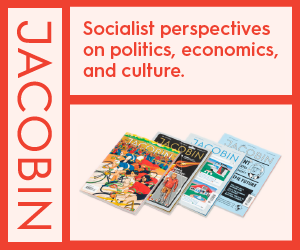Precarious Labour
Precarious labour refers to the explosion of short term, temporary and part-time jobs issuing from the economic crisis of the mid-1970s. A crisis in profitability combined with competitive pressures unleashed by the entry of China, India and the former Soviet bloc countries into the world economy, which doubled the size of the global labour supply, led employers to look for ways to cut their labour costs. Among other things, they resorted to shedding full time jobs that carried costly benefits – like employer contributions to pension plans and health insurance, typically under the guise of the quest for “flexibility.”
Prior to World War II, most jobs were precarious and wages were unstable. Cutting wages as well as employment was the typical employer response to periodic recessions. In many sectors, most jobs were temporary. Pensions, health care and other benefits were almost unknown and there was no safety net to speak of. But after WW II, full-time, continuous work with decent pay and benefits became the standard employment relationship – at least for white, able-bodied male workers who were assumed to be the primary bread winners with stay-at-home wives as full time caregivers. A social safety net which offered protection during exceptional periods of lay-off or short-term job loss, along with the spread of union representation and employment standards legislation that covered minimum wages, hours of work and the like, allowed workers a degree of income security and control over the conditions of work.
Whereas in the quarter century ending in 1975, precarious labour in Canada constituted at most 12 percent of formal employment, today it comprises at least a third of all jobs and likely more. And it extends pretty much to all fields: seasonal workers, security guards and sales persons; web designers, fast-food workers and university teachers; child care and elder care workers, and so on. Many of these jobs are genderized and racialized.
Precarious work is mainly found among non-standard employment relationships, including part-time and contractual work, self-employment, temp-agency work and employment created by temporary migrant labour schemes. Altogether these constitute the fastest growing jobs, partly because of the rapid expansion of the service sector where such jobs are concentrated, but mainly because they offer substantially reduced costs and greater flexibility for employers. On the whole, the wages are much lower and the benefits far fewer. It is a non-unionized, just-in-time labour force. Many corporations and government bodies contract out some of the work previously done in-house to small companies, temp agencies or the self-employed. A strategy favoured by some corporations is to maintain a small core of highly desirable full time, full-benefit positions as a means to elicit extraordinary effort over a long period of time from workers competing for these positions. Many workers are forced to take part-time employment in a company in the hope that they will be hired full time when full-time job slots open up. But these are growing increasingly scarce.
Not all non-standard employment qualifies as precarious. Some people opt for non-standard jobs because these correspond to their preferences and priorities, for instance opting to work part-time in order to be able to attend school or tend to family responsibilities. A small segment of workers prefer this arrangement to working full-time for one employer. With skills that are in demand, they are fairly certain to have continuous employment, and although they do not enjoy job security, they may be well paid for their time. They can pick and choose what contracts to accept and they exercise some control over their workload and conditions of work. Some are able to maintain this arrangement because of the support they receive from regularly employed spouses or parents.
Precariousness can therefore be a matter of degree. But in the case of jobs that are unambiguously precarious, continuing employment is highly uncertain; searching for work can be an almost constant necessity; wages are insufficient and there are few benefits such as sick pay, employer pensions and paid vacations; there is no control over the conditions of work; scheduling can change daily and some workers are always on call; there is little or no access to union representation or regulatory protection by way of legislated labour standards; seniority is nonexistent; and of course UI benefits and other government-sponsored programs are less accessible.
Dealing with permanent precariousness
There will be no return to the days when full-time permanent jobs were the norm for many working people. Non-standard employment is the working arrangement of choice for employers eyeing their bottom lines. In a situation of perennially high unemployment, driven by globalization and labour-saving technology, there will always be workers willing to accept precarious jobs. We can press for reforms, however, to mitigate the worst effects of precarious labour. In Canada, these include broadening the scope of labour standards legislation to cover workers in non-standard employment, including much enhanced severance pay for workers on short-term contracts; more inclusive access to unemployment insurance through reduced hours of eligibility requirements, shorter waiting periods and more generous income replacement levels to be funded by employers who make it a practice of hiring short term; and converting minimum wages to a living wage standard (between $12.00 and $15.00 per hour in 2011 depending on province of residence). Or approaching it from the opposite angle, the definition of an employee can be expanded to include dependent contractors, as recommended in the 2003 Bernier Report (a seminal Québec study of methods for protecting workers in non-standard employment) or, more ambitiously, to encompass any person who depends on the sale of their capacity to work.
Since workers in non-standard jobs are notoriously difficult to organize, unions will need to shift more of their resources to supporting community-based organizations like Toronto’s Workers’ Action Centre, Calgary’s Workers’ Resource Centre, Winnipeg’s Organizing and Resource Centre, Hamilton’s Migrant Workers Family Resource Centre and Montreal’s Immigrant Workers’ Centre. Working closely with newer social movements, immigrant communities and other disadvantaged groups, these centres are better positioned to support and coordinate the struggles of workers employed in precarious positions.
Ultimately, of course, precariousness will only be eliminated by a decently funded universal income security program – a guaranteed annual income (GAI) that would replace all existing government social security, old age, unemployment insurance and disability programs. The idea of a GAI has been debated from time to time over the past 50 years, but in this era of precarious labour it has become nothing short of an imperative.
This article appeared in the May/June 2011 issue of Canadian Dimension (Precarious labour: a special issue).










